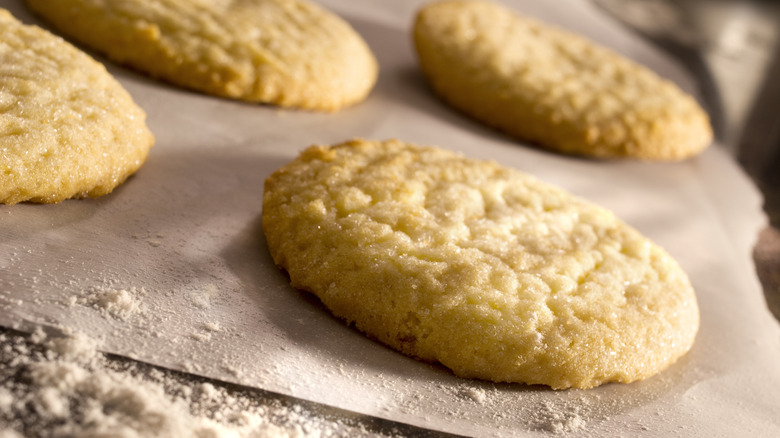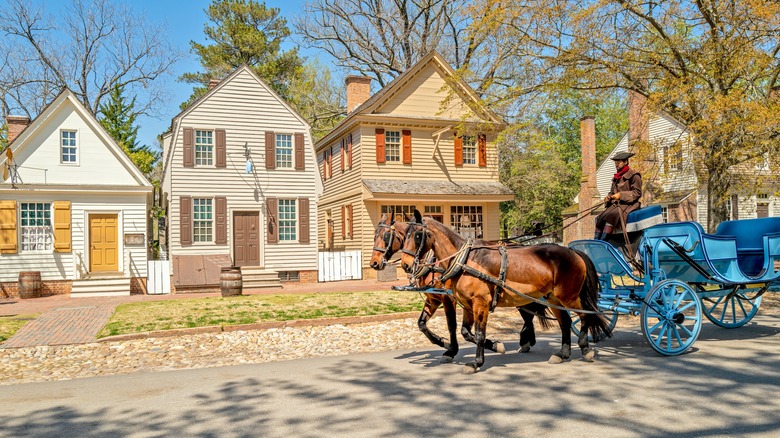The 17th-Century Origins Of Sugar Cookies
When we think of modern science we might think of cellphones and the internet, but maybe we should be thinking of sugar cookies. Something as simple as making sugar cookies may not seem like a culinary breakthrough, but if you go back in time you see that the easy-to-make treats we think of today were actually the product of numerous innovations in cooking. Cookies themselves have existed for thousands of years, with some of the earliest comparable baked goods dating all the way back to early Persia in the 7th century. Yet the thin, crispy and tender combo we associate with our modern day buttery sugar cookies would take over 1,000 more years to appear.
Due to the rarity of sugar in medieval times, cookies were originally mostly unsweetened biscuits made more for simple eating than celebration. It wasn't until the 16th century that they started to take something resembling their sweet modern form. German bakers started creating crispy versions resembling gingerbread with sugar and spices obtained from newly booming European trade routes. It was during this same era that baking molds for cookies were invented, another hallmark of sugar cookies. The demands for sweets eventually led to the establishment of sugar plantations by European colonizers in the 17th century, and over the next 100 years sugar became common enough to be used by average families. At the same time, cookie recipes were migrating from Europe to the Americas, where our current sugar cookies would take shape.
Sugar cookies evolved in the kitchens of Colonial America
Sugar cookies have a number of possible ancestors from Europe, including gingerbread and simple confections called jumbles, which were hard sugar and butter treats bought over from England to the earliest American settlements in the 1600s. Still it took until the later 18th century for all the components of sugar cookies to fall into place. Dutch settlers in late 1700s New York created a small cake called a koekje, where the American pronunciation of cookie comes from. Recipes for those "cakes" introduced the innovation of chemical leavening by using baking soda and baking powder, which were new products at the time. Chemical leaveners help sugar cookies achieve the combination of crisp and chewy texture we know and love today.
Right around the same time is when we got the first close approximation of modern recipes: the Nazareth sugar cookie. Created by German Protestant settlers in Nazareth, Pennsylvania, it was a crumbly confection that was shaped into a keystone, the state symbol. Made from flour, butter, sugar, eggs, vanilla, and chemical leaveners, it was almost identical to what we would make today, and it took off in popularity. The exact genesis of the sugar cookie in that community is hard to pin down, but in it you can see the mix of modern ingredients that were taking hold in America, and the tradition carried over from Germany. Like anything so great, sugar cookies just needed time to be perfected.

